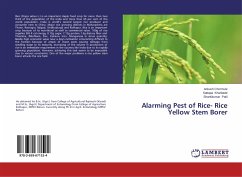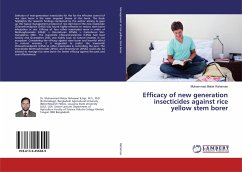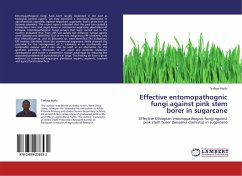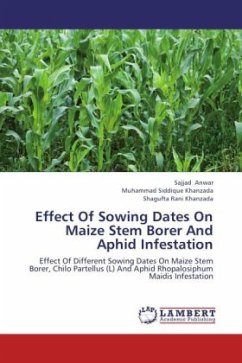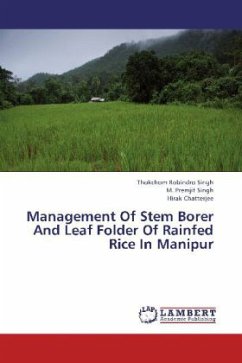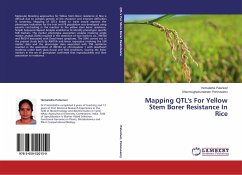
Mapping QTL's For Yellow Stem Borer Resistance In Rice
Versandkostenfrei!
Versandfertig in 6-10 Tagen
36,99 €
inkl. MwSt.

PAYBACK Punkte
18 °P sammeln!
Molecular Breeding approaches for Yellow Stem Borer resistance in Rice is difficult due to complex genetic of the character and inherent difficulties in screening. Mapping of QTL's linked to traits would improve the phenotypic evaluation for the trait and F8 population was developed using parents contrasting in the reaction to the yellow stem borer resistance. Simple Sequence Repeat Analysis enabled as to identify phenotypic specific SSR markers. The marker phenotype association analysis involving single marker analysis (SMA) resulted in the detection of two markers viz., RM104 and RM314 assoc...
Molecular Breeding approaches for Yellow Stem Borer resistance in Rice is difficult due to complex genetic of the character and inherent difficulties in screening. Mapping of QTL's linked to traits would improve the phenotypic evaluation for the trait and F8 population was developed using parents contrasting in the reaction to the yellow stem borer resistance. Simple Sequence Repeat Analysis enabled as to identify phenotypic specific SSR markers. The marker phenotype association analysis involving single marker analysis (SMA) resulted in the detection of two markers viz., RM104 and RM314 associated with Dead Heart symptoms. The SMA carried out in the present study both by ANOVA and linear regression involving the SSR marker data and the phenotypic data associated with YSB resistance resulted in the association of RM104 on chromosome 1 with deadheart incidence under both glass house and field conditions. Scoring the linker markers in the set of germplasm confirmed that reproducibility and their association to resistance.




